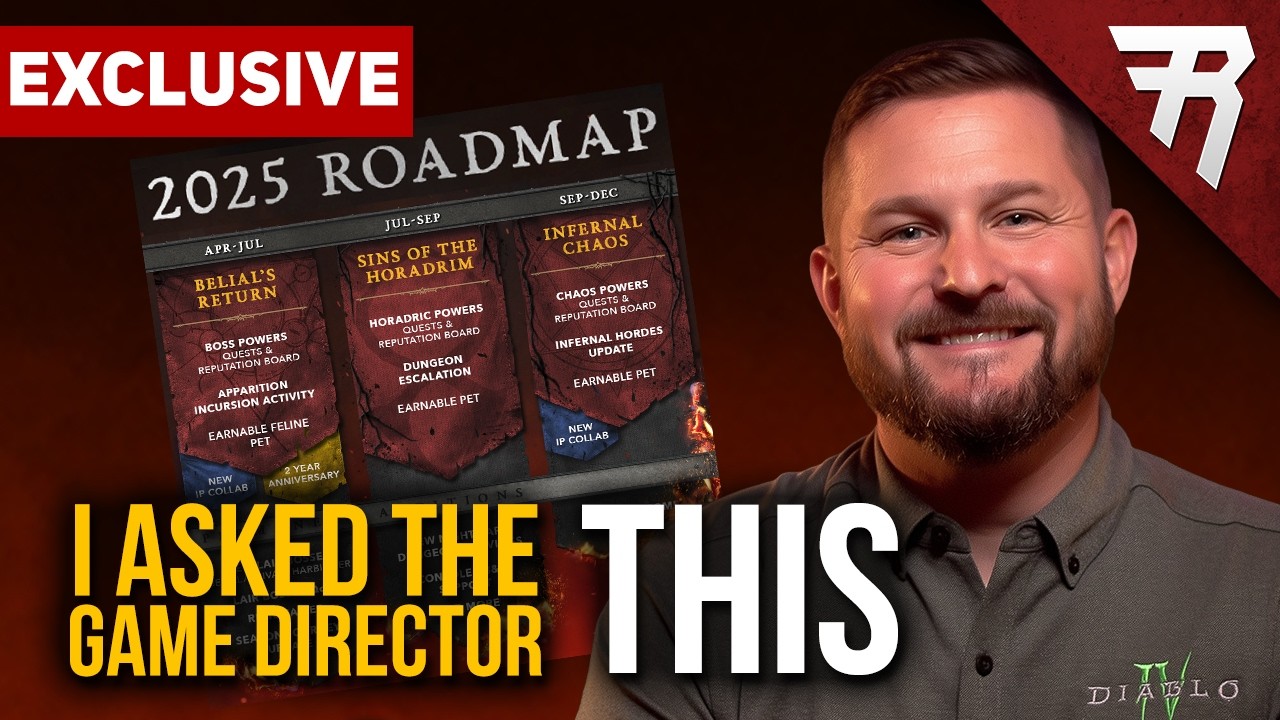Recently, Blizzard unveiled its Diablo 4 roadmap, and responses have been a bit mixed.
Diablo 4 is a wildly successful ARPG sequel to the legendary franchise that created the genre. At launch, it was an incredibly promising platform upon which to build something special, but arguably, a lot of that early promise has petered out.
I myself have stopped playing Diablo 4, because the seasonal content model didn’t really grab me. Every season feels practically the same, and it’s difficult for me not to compare it to the absolute deluge of content I get playing World of Warcraft season over season. Even WoW’s upcoming “mini” mid-season patch feels beefier than what Diablo 4 has been offering in some of its seasons — and part of the problem is that Diablo, for some reason, hasn’t learned from World of Warcraft’s previous mistakes.

World of Warcraft underwent a historic decline over the past few seasons, but has begun turning things around based on recent API data. One of the things I attribute to this turn around is the change of the Warcraft team’s philosophy towards borrowed power.
“Borrowed power” refers to progression systems that are removed or reset the following season. For example, in World of Warcraft: Battle for Azeroth, we had a powerful necklace that we could power up over time, and would ultimately lose at the end of the expansion. In Shadowlands, we had Covenants with the factions of the afterlife, and we’d lose their powers once we left.
It was incredibly irritating and began feeling utterly formulaic, when you knew that by the end of the expansion, all that progression was going to ultimately be meaningless. That’s always been true of games like this at the end of the day — but borrowed power mechanics put that reality firmly up front and center.
Recently, Diablo 4 content creator Rhykker landed an interview with Diablo 4’s game director Brent Gibson, which went into further detail about Blizzard’s recently revealed Diablo 4 roadmap.

The roadmap is very similar to World of Warcraft’s roadmap layout, which is a very admirable attempt at greater transparency on Blizzard’s part. It’s incredibly useful too for them, hopefully, as a feedback gathering tool. And if you look at the comments on Rhykker’s video and across the Diablo 4 subreddit, people are lining up to give feedback.
A lot of the discourse revolves around those pesky borrowed power mechanics, which we’ve seen Blizzard leverage ad nauseum in Diablo 4 since it launched.
One of the reasons Blizzard killed borrowed power in World of Warcraft wasn’t just because it felt bad to lose all of that progression at the end of the season, but because couldn’t the development time be used on things that add permanent upgrades to the game? And to be fair, the Diablo 4 team has spent development hours improving existing systems, but it’s all too often backwards-facing.
Diablo 4 fans have starting creating memes around how Diablo’s seasonal model is basically just shifting previous mechanics across with a new color theme. New, permanent additions to the game, such as the revamped boss ladder with Belial, don’t seem to hit the game at the cadence players would potentially like.
Rhykker argues that Diablo 4 would be better off with a “meta-progression” layer, by which players would unlock actual content like bosses and new dungeons as they progress their power. I couldn’t agree more on that point. World of Warcraft’s new boss Delves accentuate that to some degree, giving players who have progressed their gear score a major challenge and permanent reward to unlock for that particular season.
Personally, I wouldn’t mind if Blizzard’s Diablo spent a little longer making seasons bigger and more meaningful than rushing together temporary systems that will be lost and forgotten forever when the seasons end. And yes, some “borrowed power” features do make their way into the game permanently as affixes and the like, but it’s not quite as inspiring as all-new systems and dungeons that now typically only come with full expansions.
There’s simply a lot in Diablo 4’s design that doesn’t make a whole lot of sense to me. The only permanent rewards are transmog (gear styles), and all the best ones come from paid DLC and not from actually playing. Features like World Bosses and strongholds are underwhelming in endgame play, and bosses rarely feel like epic climactic battles as they should, but instead reflect annoying road bumps with minimalistic rewards.
I accept how tough it can be hard for developers to thread the needle on games like this. The entire player base is comprised of communities that want different things ultimately. Path of Exile 2 is seeing some contention with its attempts to create a slower, more difficult ARPG experience over the Diablo 3-style hyper-power fantasy with millions of exploding numbers. I also realize that World of Warcraft has a monthly subscription model that funds its ongoing development, likely giving that team a far bigger budget with which to play.
But, in my humble view, I don’t think the resources the Diablo 4 team has are being used as effectively as they could be, from a design philosophy stand point.











